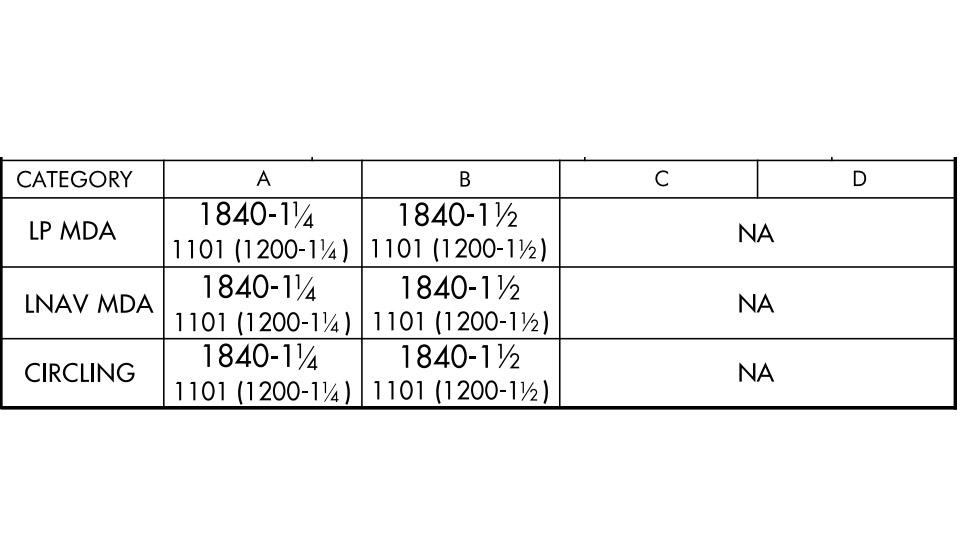Instrument Tip: I can’t fly 55
Speed categories on the approach

Take the recent change of AIM Paragraph 5-4-7 from “shall” to “should.” Changing that one word required advocacy organizations, working groups, regulatory professionals, and lawyers to come together for months. Rightfully so, because although it primarily affects the airlines, pilots of all aircraft will be affected.
Look on an instrument approach plate and at the bottom you’ll find category listings with associated cloud ceiling and visibility minimums. Those minimums are the hard limits for what’s possible on an approach. With few exceptions, when flying an approach, if you reach the altitude and distance from the runway specified on the plate and don’t see the runway environment, you must fly a missed approach.
The categories correspond to aircraft speed. When you think about a safety buffer, it makes sense to have different categories. The faster you go, the wider the turn radius, the less time the pilot has to make decisions, and the faster the closure rate with the runway.
FAR 97.3 dictates the category speeds, based on the aircraft’s certificated final approach speed—or generally, 1.3 times the dirty stall speed. Category A is slower than 91 knots, Category B is 91 to 121 knots, Category C is 121 knots to 141 knots, Category D is 141 knots to 166 knots, and Category E is 166 knots or more. Most light aircraft fly Category A minimums. But sometimes conditions dictate a faster approach speed. You’ve heard of increasing approach speed by half the gust factor. Windy conditions are just one situation where flying faster may be appropriate.
Until recently, flying a speed that bumped you up a category required you to then apply the higher category’s limits.Until recently, flying a speed that bumped you up a category required you to then apply the higher category’s limits. For example, a Cessna 172 flying an approach at 100 knots was required to use the Category B minimums, even though 1.3 times the stall speed is probably somewhere around 60 knots indicated.
That was until the word change.
Now the AIM guidance advises the pilot that he or she should probably move up categories, but it’s no longer required. The initial request for a change came from an airline that was having trouble making an approach into one of its hubs with a common aircraft. The Category D aircraft routinely flew Category E speeds, but no Category E minimums existed for the approach.
According to AOPA Senior Director of Government Affairs Rune Duke, the category switch was never enshrined in the regulations, so changing the AIM is effectively bringing the FAA in line with itself. “There was no regulatory or legal basis that required a pilot step up categories,” he said.
Regardless of the requirements, safety should be the primary factor. And operating in a higher category while continuing to use the lower category’s minimums does put the flight at higher risk. “If you fly faster than the category speed, you are legal, but maybe not safer,” Duke said.
Jim Kenney, an FAA safety inspector who works in the Flight Technologies and Procedures division and who helped facilitate the change, put it another way. “The good news is that you will not get violated,” he said. “But if you hit something, the violation would have been the better option.”
Likely the biggest safety risk comes with circling approaches, which require maneuvering while flying low, slow, and in poor weather. Increasing the speed to create some aircraft stability may bump up the approach category, which on a circling approach can increase the minimums significantly. The new AIM language expands upon the variables a pilot should consider before deciding to fly a higher approach speed for the given minimums being referenced.
It’s always nice to have flexibility, but the FAA’s Kenney has the right attitude. Safety has always been the primary consideration. FT



